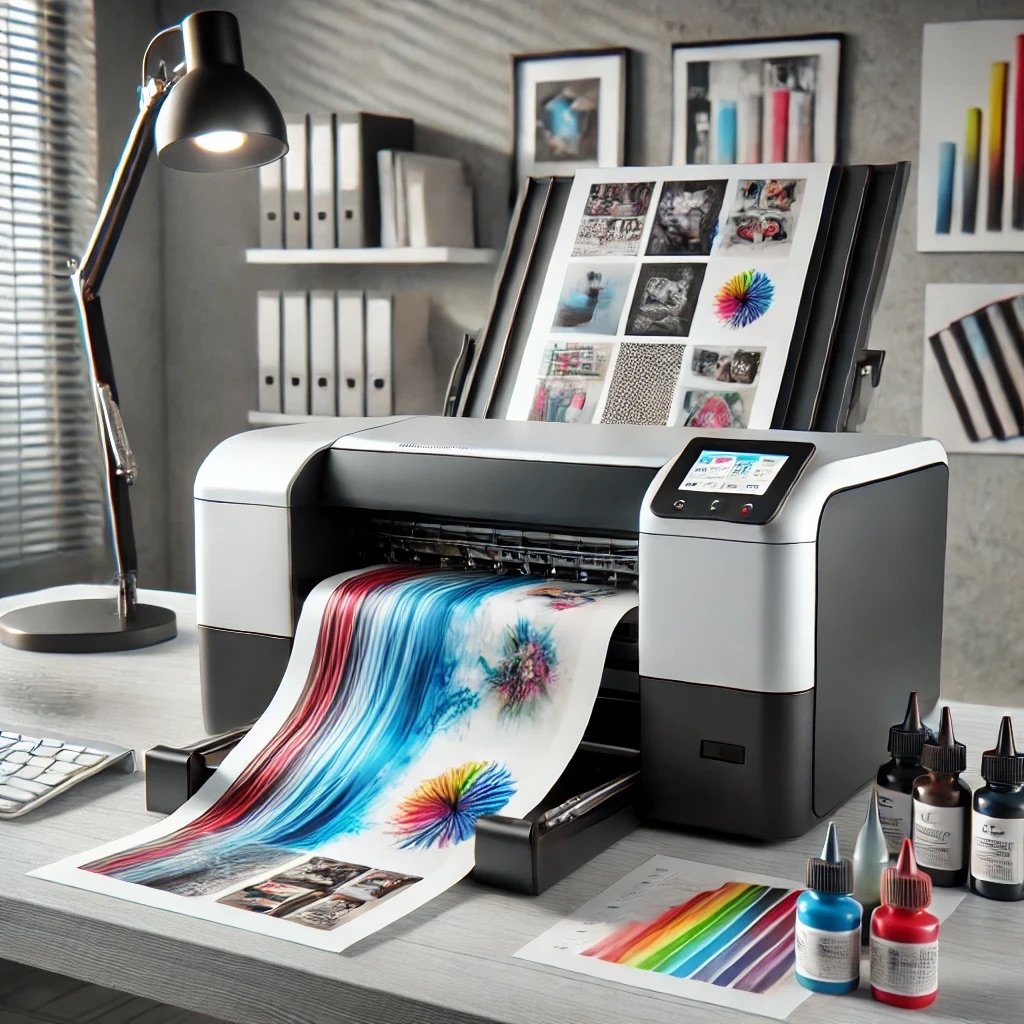

The Different Types Of Sublimation Paper And Why You Need It.
What Are The Different Types Of Sublimation Paper, And Why You Use It?
Sublimation paper plays a crucial role in the sublimation printing process, serving as the medium that transfers your designs onto substrates like fabric, mugs, or other surfaces. Understanding the various types of sublimation paper can help you choose the right one for your projects, ensuring optimal print quality and efficiency. Below is a list of the most common types of sublimation papers, including their weights and typical uses.
1. Light-Weight Sublimation Paper (70-80 gsm)
• Weight: 70-80 grams per square meter (gsm)
• Use: Ideal for high-speed printing and transferring onto light fabrics such as polyester T-shirts, light textiles, and soft surfaces.
• Why Use It: Light-weight sublimation paper dries quickly, making it perfect for high-volume production environments. It’s great for projects where speed and cost efficiency are priorities, such as producing promotional items or bulk orders.
2. Medium-Weight Sublimation Paper (90-110 gsm)
• Weight: 90-110 gsm
• Use: Versatile and suitable for a wide range of substrates including fabrics, ceramic mugs, mousepads, and other medium-rigid items.
• Why Use It: Medium-weight paper strikes a balance between transfer quality and ink absorption, providing crisp and vibrant results. It’s a popular choice for general-purpose sublimation printing, offering good durability and consistency in color output.
3. Heavy-Weight Sublimation Paper (120-150 gsm)
• Weight: 120-150 gsm
• Use: Best for hard surfaces like tiles, metal sheets, and other rigid substrates that require more ink absorption and longer pressing times.
• Why Use It: Heavy-weight sublimation paper can handle more ink, resulting in richer colors and sharper images. It’s ideal for projects that need maximum color density and detail, such as high-end decor items, custom photo panels, or large-scale prints.
4. Sticky or Adhesive Sublimation Paper
• Weight: Typically available in medium to heavy weights (90-120 gsm)
• Use: Designed for substrates that tend to shift during the heat transfer process, such as sportswear, stretchy fabrics, and apparel.
• Why Use It: The adhesive quality prevents ghosting and misalignment, ensuring that your designs transfer accurately. This type of paper is essential for garments that require precision and consistency in the transfer process.
5. Fast-Dry Sublimation Paper
• Weight: Available in light to medium weights (70-100 gsm)
• Use: Specifically formulated for rapid drying, making it suitable for environments with high production demands.
• Why Use It: Fast-dry sublimation paper reduces downtime between printing and pressing, allowing for quicker turnaround times. It’s especially useful when working with large orders or time-sensitive projects.
6. High-Release Sublimation Paper
• Weight: Medium to heavy weights (100-130 gsm)
• Use: Used when high color vibrancy is needed, such as for banners, flags, and items where deep saturation is crucial.
• Why Use It: High-release paper maximizes the transfer of ink from the paper to the substrate, resulting in exceptionally vivid and sharp images. It’s ideal for projects that demand the best in print quality and color fidelity.
7. Glossy Sublimation Paper
• Weight: Typically ranges from medium to heavy weights (100-130 gsm)
• Use: Ideal for items that benefit from a shiny, high-gloss finish such as photo panels, mugs, keychains, and other personalized gifts.
• Why Use It: Glossy sublimation paper enhances the vibrancy of colors and provides a polished, reflective finish that makes images pop. It’s perfect for high-end products where visual appeal and a professional look are paramount. The gloss effect can also add depth and a luxurious feel to your prints, making it a popular choice for customized items intended as gifts or keepsakes.
Choosing the Right Sublimation Paper
When selecting sublimation paper, consider the specific requirements of your project, including the type of substrate, the desired color output, and the production speed. Lighter papers work best for fast production on soft surfaces, while heavier papers excel in quality on hard substrates. Adhesive papers are essential for stretchy or easily movable materials, ensuring that your designs stay perfectly aligned.
Using the right sublimation paper will not only improve the quality of your final product but also streamline your production process, making your business more efficient and effective.
